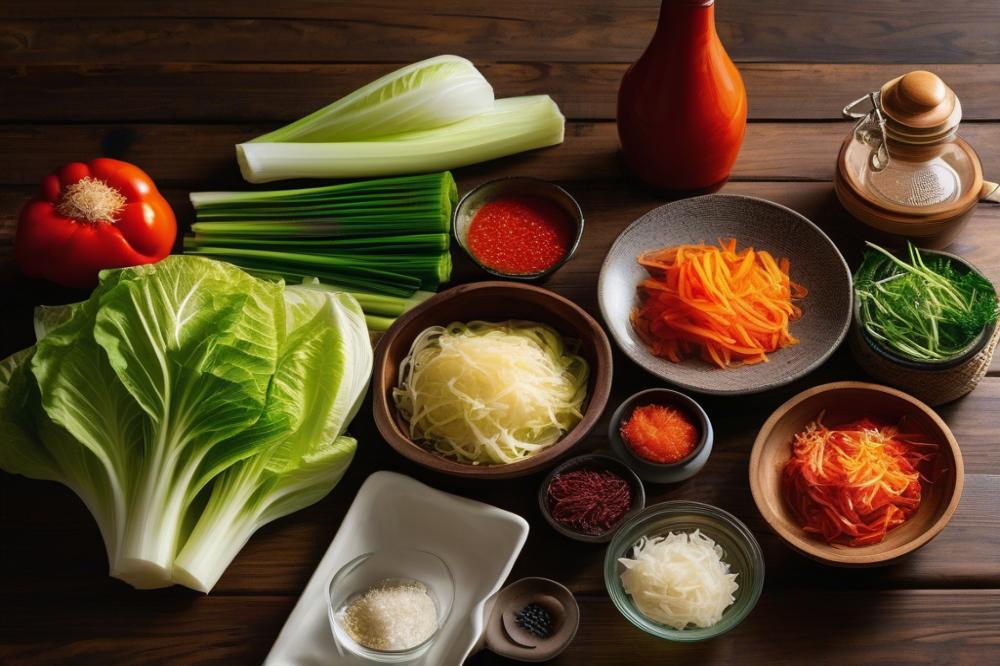Introduction
Korean cuisine features many delicious dishes, but few are as iconic as Baechu Kimchi. This spicy kimchi, made primarily from Napa cabbage, plays a crucial role in the daily meals of countless families. Often served as a side dish, it perfectly complements rice and other main courses. Its vibrant flavors and crunchy texture enhance nearly any meal.
Pickled vegetables have deep roots in Korean culture. They preserve ingredients, making sure they last longer. Better yet, the process of fermentation enriches the food with beneficial bacteria. These bacteria support gut health and contribute to overall well-being. Many people are starting to recognize the health benefits of incorporating fermented foods like Baechu Kimchi into their diets. Not only is it flavorful, but it also aids digestion, boosts immunity, and may even provide essential nutrients.
Creating homemade kimchi allows one to explore the rich traditions of this beloved side dish. Every family often has their own recipe, adding unique flavors to their version. Whether spicy, tangy, or slightly sweet, traditional kimchi varies widely across different regions. Making Napa Cabbage Kimchi at home invites you to connect with Korean culinary heritage while enjoying the numerous health advantages of fermented vegetables.
What is Baechu Kimchi
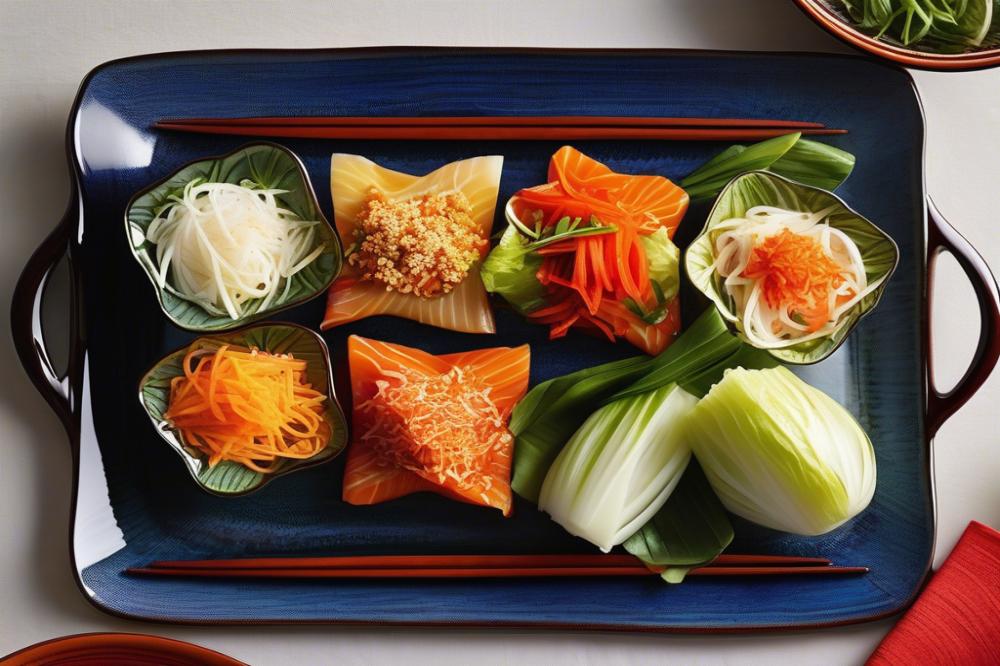
Baechu Kimchi is a fundamental part of Korean cuisine and is known for its spicy kick and crunchy texture. This type of kimchi mainly uses Napa cabbage, a leafy vegetable that is tender yet robust. Napa cabbage sets itself apart from other kimchi ingredients due to its sweetness and ability to absorb flavors well, making it ideal for this beloved dish.
The fermentation process is crucial for developing the rich and complex flavors in kimchi. During fermentation, natural bacteria start breaking down the sugars found in the vegetables. This not only adds a tangy taste but also creates probiotics that contribute to numerous health benefits. Over time, the cabbage becomes soft and the flavors deepen, transforming simple ingredients into a satisfying side dish.
Traditionally, the preparation of homemade kimchi involves several steps. First, the cabbage is soaked in saltwater to draw out excess moisture. Afterward, it’s coated with a spicy mixture made from red pepper flakes, garlic, ginger, and fish sauce. Variations exist, as different recipes may include ingredients like radishes, green onions, or even fruits to give additional flavors. These variations make every batch of pickled vegetables slightly different, offering families their personal touch.
Napa cabbage serves as the base in many types of kimchi, but its unique characteristics help Baechu Kimchi stand out. Many enjoy it not only for its taste but also for its nutritional value, as it’s packed with vitamins and minerals. It complements a wide range of meals, making it a popular choice on the dining table. Each bite delivers a balance of crunchiness, spice, and umami flavor, showcasing the delightful essence of traditional kimchi.
Ingredients List and Cooking Instructions
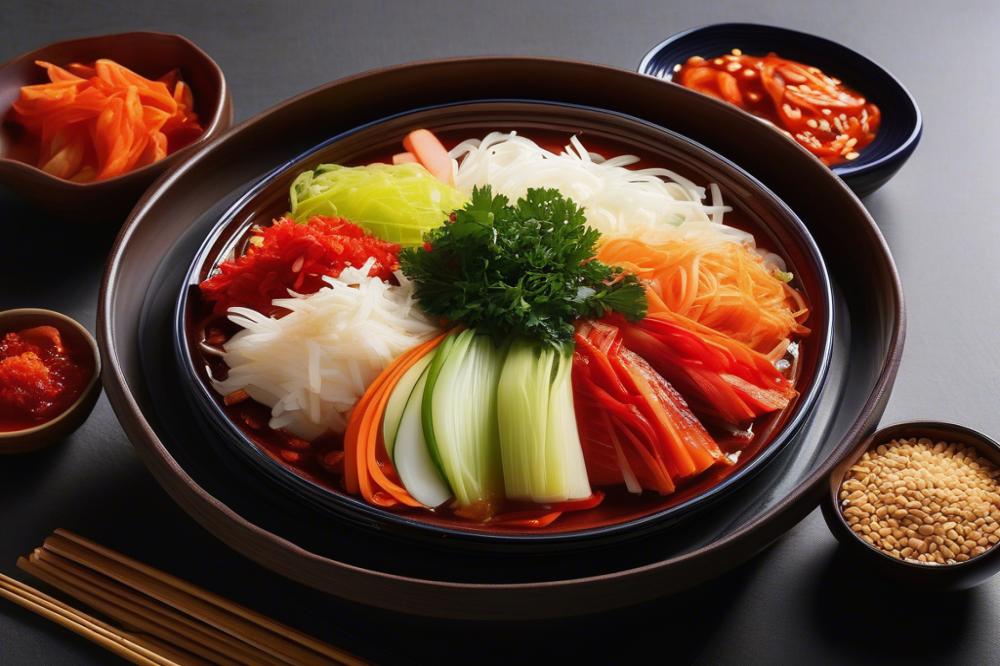
Ingredients List:
- 1 large Napa cabbage (about 2-3 pounds)
- 1/2 cup sea salt
- 5 cups water (for soaking)
- 1 tablespoon grated ginger
- 1 tablespoon minced garlic
- 1/2 cup Korean gochugaru (red pepper flakes) (adjust for spice level)
- 3 tablespoons fish sauce (or soy sauce for a vegetarian option)
- 1 tablespoon sugar
- 4 green onions, chopped
- 1 daikon radish, julienned (optional)
Cooking Instructions:
Begin by preparing the Napa cabbage. Cut it in half lengthwise and then chop the halves into quarters. Next, dissolve sea salt in water to create a brine. Soak the cabbage pieces in this salty water for about 2 hours, turning them occasionally to make sure they soak evenly.
After two hours, rinse the cabbage well under running water. Draining it thoroughly helps remove excess salt. In a mixing bowl, combine the grated ginger, minced garlic, and Korean gochugaru. Add fish sauce, sugar, chopped green onions, and julienned daikon radish to form a thick paste. This mixture is what gives the spicy kimchi its punch.
When ready, wear gloves to protect your hands from the spice. Generously coat each piece of cabbage with your homemade paste, ensuring that every leaf is covered. Press the cabbage pieces tightly into a clean jar, which helps eliminate air pockets. Packing them tightly also promotes better fermentation.
Once packed, seal the jar properly and place it in a cool corner of your kitchen. Let it ferment at room temperature for 1 to 3 days. Check on it daily; you’ll start to smell that distinct aroma of traditional kimchi! After fermentation, store the jar in the refrigerator to slow down the process.
Your homemade kimchi can be enjoyed as a healthy side dish. Consume it within a few weeks for the best flavor. Remember, this recipe not only adds a delicious crunch to meals but also offers various health benefits, including probiotics from the fermentation process.
Napa cabbage provides low calories and is rich in vitamins A, C, and K. Garlic adds immune support properties. Ginger contains anti-inflammatory benefits, making this a truly healthy addition to your diet. Gochugaru brings spice as well as nutritional content to the table. Fish sauce enhances flavor and adds omega-3 fatty acids, while green onions contribute good amounts of vitamins. Enjoy the adventure of making your own pickled vegetables!
Health Benefits of Baechu Kimchi
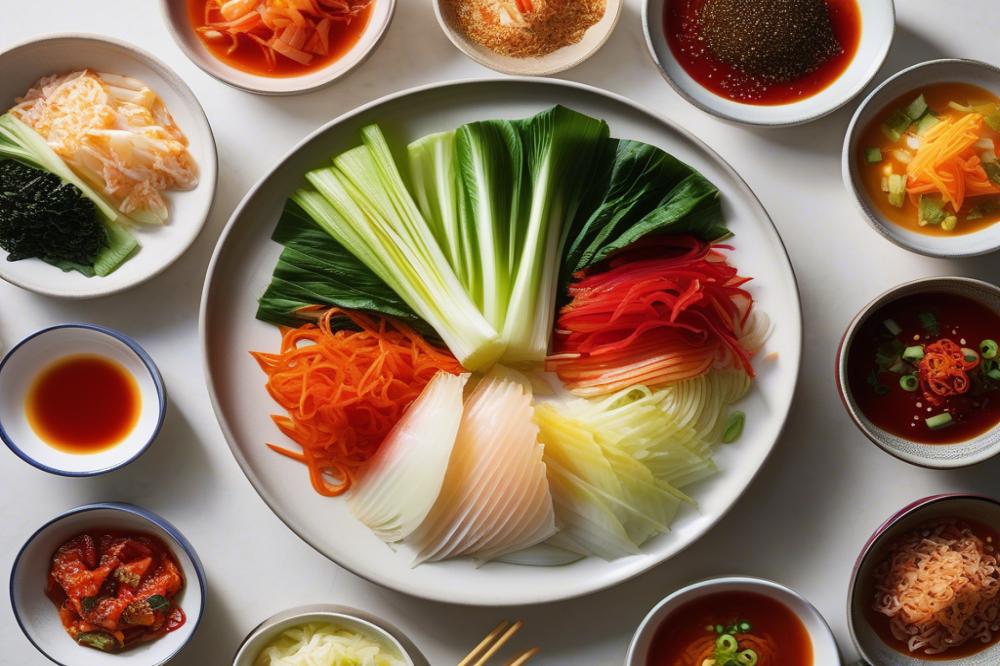
Eating Baechu Kimchi offers several important health benefits. The process of fermentation involves beneficial bacteria. These probiotics help maintain a healthy gut. A balanced gut flora is essential for good digestion and overall wellness. Fermentation transforms raw ingredients into a source of live microorganisms. Regular consumption can enhance your digestive health significantly.
In traditional Korean cuisine, spicy kimchi is a staple item. It’s made from Napa cabbage and various spices. The vegetables in kimchi, like cabbage and radish, are full of vitamins. For instance, cabbage is rich in vitamin K and C. These nutrients support the immune system and contribute to skin health.
Making homemade kimchi is a rewarding experience. You can adjust the spices according to your taste. This recipe not only brings flavor but also nutrition. Pickled vegetables in kimchi offer a unique combination of flavors and textures. Eating this side dish regularly can boost overall health as part of a balanced diet.
Besides enhancing gut health, kimchi may help in weight management. The low-calorie content, paired with high fiber, can promote feelings of fullness. Including kimchi in meals can reduce the need for less nutritious snacks. Therefore, this spicy kimchi can fit well into various dietary plans.
Moreover, fermentation produces beneficial compounds. These compounds can have antioxidant effects in the body. Eating fermented foods can lower the risk of certain diseases. Including fermented items like traditional kimchi in your diet is an excellent choice for supporting health.
Incorporating Baechu Kimchi into Meals
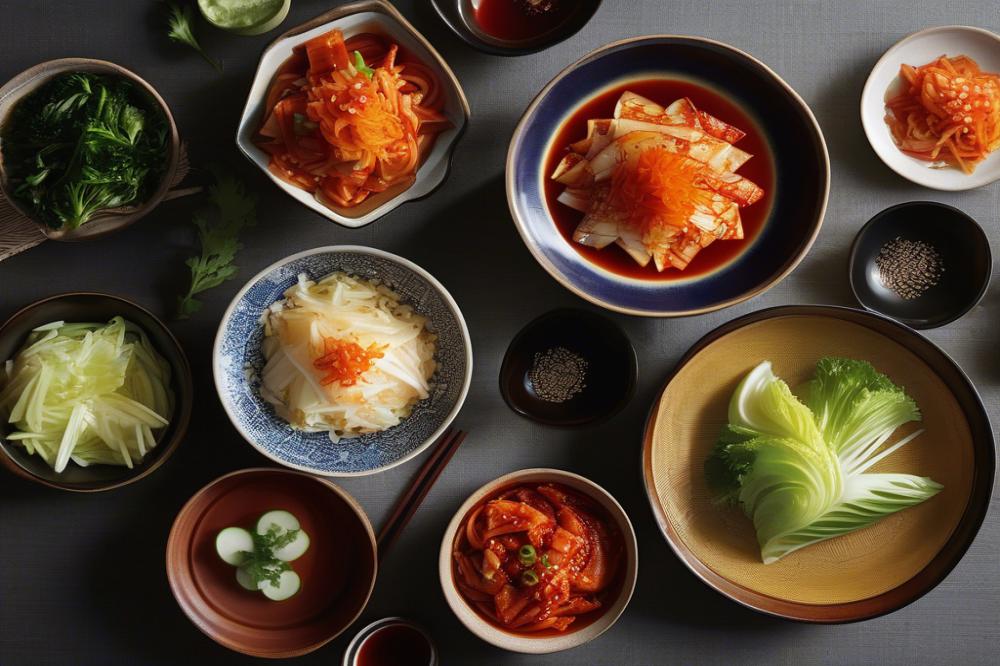
Adding kimchi to meals enhances flavors and adds a tangy element. As a popular side dish in Korean cuisine, this spicy kimchi goes well with many dishes. Traditionally, it is served alongside rice. A simple bowl of steamed rice transforms into something special when paired with this fermented pickled vegetable. The crunchiness of the napa cabbage complements the soft grains perfectly.
Stews are another fantastic option. Korean jjigae, which is a type of stew, benefits greatly from the addition of pickled vegetables. Adding a scoop of kimchi into the bubbling broth brings depth and complexity. Some people even enjoy a spoonful of it on top of their jjigae, igniting a burst of flavor in each bite.
For those who love cooking, consider using this recipe in a kimchi fried rice dish. stir-frying chopped kimchi with rice, vegetables, and a bit of protein creates a satisfying meal. The heat from the spicy kimchi is balanced by the savory ingredients, making every forkful a delightful experience. Homemade kimchi can be adjusted based on personal spice levels, catering to individual tastes.
This traditional kimchi also serves as a nutritious addition to lunch or dinner. Health benefits from fermented foods are well-known. They are good for digestion and can help boost the immune system. Including more vegetables in meals not only adds nutrients but also brightens up the plate with vibrant colors.
Some people enjoy making their own variations of this classic dish. Mixing kimchi into salads or sandwiches can make boring meals exciting. This allows for creativity in the kitchen while embracing the rich flavors of Korean cuisine. At a barbecue or picnic, serving kimchi with grilled meats adds a refreshing contrast. The spicy tang cuts through the fattiness of grilled food, making it even more delicious.
Baechu kimchi is more than just a side dish; it’s an essential component of many Korean meals, deeply rooted in the culture. Its versatility allows it to be used in numerous ways. Whether served straightforward or incorporated into a larger recipe, this pickled vegetable will elevate your dining experiences.
Final Thoughts on Baechu Kimchi
Baechu Kimchi is more than just a dish; it holds a special place in Korean cuisine. This traditional side dish adds a burst of flavor to meals, complementing everything from rice to grilled meats. Its tangy taste and crunchy texture can elevate any dining experience, making it a staple in many households.
Health benefits are another reason to appreciate this fermented dish. Packed with vitamins and probiotics, Kimchi can support gut health and boost the immune system. Many people enjoy the idea that what they consume can be both delicious and nourishing at the same time.
Creating homemade kimchi offers a unique satisfaction. When you prepare it yourself, you can customize the flavors to suit your preferences. Imagine the aroma of seasonings filling your kitchen as you mix the ingredients. That moment can be truly rewarding. It also connects you to a rich cultural tradition that has been passed down through generations.
Consider taking the plunge and making your own version of this delightful dish. The process of fermentation is fascinating and allows you to experience the transformation of flavors over time. Not only will you develop new culinary skills, but you will also discover the joys of traditional fermented foods.
So, gather your ingredients and start your journey into making Baechu Kimchi. Embrace the experience and enjoy the wonderful taste of something you created yourself.

